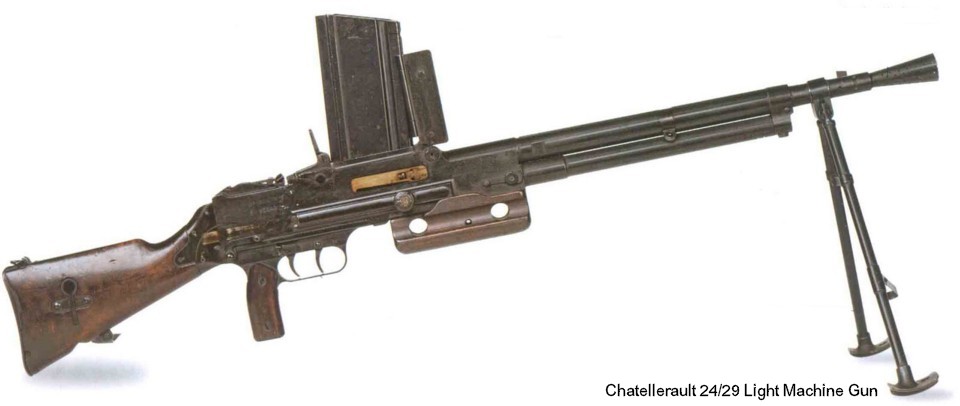The 7.5×58 was designed in a search for a replacement for the French 8x50R Lebel round at the end of WW 1, which, although being one of the first smokeless rounds, had a shape that was not suitable for semi-auto of full auto weapons. The French, not trusting the peace after WW1 continued development of a semi auto rifle from 1921 onwards. Development was done on the semi-auto and full auto concepts, with the rest sort of falling by the wayside to the effect that, when war broke out in 1939, most of the troops were again issued with WW1 equipment. The first light machine guns however appeared in 1922 as well as the development of a new cartridge that had a more cylindrical case, different from the Lebel, adapted for machine guns. The 7.5 x 58 appeared around that time in experimental form up to its official adoption in 1924, hence designated the Mle. 24. Lt.-Col. Jean Reibel who was chief of the research department of the Châtellerault Arsenal proposed the development of a new machine gun in 1923. On 21 January 1924 the new machine guns were adopted and officially designated the Fusil-Mitrailleur Mle. 1924.
The weapon was tested under combat conditions in Morocco, but at time they also used captured German weapons. The 7.92 x 57 cartridge is very similar to the French 7.5×58, but firing German 7.92 ammo in a 7.5mm French gun lead to some spectacular failures and as a result the cartridge was modified by shortening the case by 4mm in order to create the 7.5×54 Mle. 29.

 Early case
Early case



Atelier de construction de Tarbes


LM = Atelier de Fabrication du Mans, since 1936 resulting from the nationalization of a plant originally by Manurhin in 1927. Activities at the plant resumed in 1948 after WW2 until 1968 when it was amalgamated with Rennes Construction Workshop (for large caliber ammunition), which later became GIAT Industries.
D = Electromechanical Company, Dives, which later became Compagnie du Duralumin and Copper



MR = Manufacture de machines du Haut-Rhin à Mulhouse-Boutzwiller.
VS = Atelier de Construction de Versailles.
There were two manufacturers that utilised the code M, namely S.A des Cuivres et Alliages du Ham, and Cie Generale d’Electrometallurgy (Ets Monteel Paris) usine de Tillieres S/Havre


VS = Atelier de Construction de Versailles.
CY = Etablissement Crozet-Fourneyron au Chambon/Feugerolles


